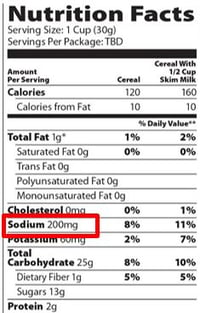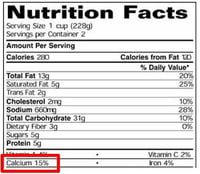Nutrition for a Child on Steroids
Some nutrition concerns that can happen when your child is on steroids include:
- Fluid retention. This can cause swelling of the hands, feet and face. It can also cause high blood pressure and extra weight gain.
- Increased appetite. Eating more can cause rapid weight gain.
- Increased calcium needs: Calcium losses from bones are increased with steroids. Good calcium and vitamin D intake is needed to prevent weakening of bones.
- Increased blood sugar levels. Simple sugars in the diet may need to be cut back.
How you can help - look for and give your child foods that are:
- Low in sodium (salt). This will help limit fluid retention and high blood pressure.
- High in calcium and vitamin D. These help replace calcium losses from bones.
- Have no concentrated sweets. This is helpful if high blood sugars happen.
For babies: Breast-feed or give formula as usual. Offer foods with calcium that your baby can eat. If your baby is breastfed, talk to your doctor or dietitian about vitamin D supplements.
Tips to lower salt in the diet
- Do not put the salt shaker on the table.
- Limit condiments. Use fresh herbs and spices or salt free seasonings.
- Do not use foods if you can see salt on them.
- Do not use salt in cooking or baking.
- Limit use of processed foods and use fresh foods whenever possible. Processed meats like ham, bacon, hot dogs and deli meats are very high in salt. Boxed meals like macaroni and cheese, skillet meals and rice or pasta pouches can also have a lot of salt.
- Limit salt when eating out. Order sandwiches without sauce, ketchup, mustard, cheese or pickles. Ask for French fries to be unsalted. Do not choose soup. Choose small or regular size items instead of large or super-size. Add a side item of fruit or a vegetable.
Read the Nutrition Facts labels.
The Nutrition Facts label can help you figure out how much sodium is in each serving of food.
The nutrition information is based on the serving size. You must look at the serving size on the first line of the food label. You will need to figure out the amount of sodium your child eats based on how much food they eat.
For the label above, if your child eats:
- 1 cup of the food = 200 mg of sodium.
- 1/2 cup of the food = 100 mg of sodium.
- 1/4 cup of the food = 50 mg of sodium.
Eat 3 to 4 servings of dairy each day. Focus on foods like milk or alternative milks, low sugar yogurt, unsalted almonds and green leafy vegetables.
Food labels list calcium as a percent of daily value.
- Add a zero to the percent daily value to know the amount of calcium per serving of food.
- Looking at the label above, 15% means there is 150 mg of calcium in this food per 1 cup of serving.
Tips to manage blood sugars
If your child’s blood sugars are too high, follow these recommendations.
- Drink water and sugar-free drinks. Avoid regular soda, fruit drinks and other sugary drinks. Even 100% juice has a lot of sugar and should be avoided. These drinks cause blood sugars to increase very quickly.
- Eat whole grain and high fiber foods. High fiber foods are fruits, vegetables, beans and legumes. Aim for 3 grams of fiber per serving of grains.
- Eat three balanced meals that include protein and fat, and are spaced throughout the day. This document was created to help you care for your child or family member. It does not take the place of medical care. Talk with your healthcare provider for diagnosis, treatment and follow-up.





